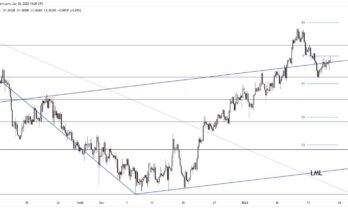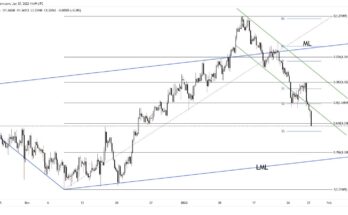The overnight deluge of global PMI data has financial markets emanating a moderately positive tone this morning, accepting a “glass half-full†mentality when assessing the economic landscape. Flash purchasing manager data from the world’s second largest economy thoroughly disappointed participants with a lower than expected reading as the Chinese HSBC Flash Manufacturing reading printed at 49.2. Indications the manufacturing industry contracted compared to February is a concern the soft landing might not indeed be as soft as some participants and the government hope, as today’s number marked an 11-month low. With the first reading on manufacturing activity post the Lunar New Year coming in below expectations, the resulting price action saw the dip in risk appetite short-lived, as market participants ratcheted up the prospects for more pronounced targeted stimulus from the government in order to navigate through the rough patch to begin the first quarter. The Shanghai Comp managed to rebound on the anticipation further stimulus from the PBoC could be around the corner, with the Chinese equity index finishing up by 0.11%.
The purchasing manager data was more positive in the euro zone, continuing to suggest the beginning of a recovery is underway and building on the positive tone that was faintly playing as the ECB launched their expanded asset purchase program. The acceleration in both the service and manufacturing sectors for Germany was evident, showing the industrial powerhouse in the common-currency bloc is charging ahead after last year’s soft patch. The stronger than anticipated PMI numbers from Germany helped offset some of the softness experienced in France, and on balance drove the euro zone composite reading to a cyclical high at 54.1, outpacing the 53.6 analysts had been expecting. The improving sentiment on the back of the optimistic purchasing manager data continues to squeeze short euro positions, with EURUSD poised for a test of the 1.10 handle and ultimately the short-term high recorded post-FOMC. A move back into the mid-1.10s will be required to initiate the next leg up in corrective price action, putting further pressure on the weaker euro shorts.
As we head into the North American open, the greenback is once again driving price action throughout currency markets. The short-squeeze on the euro has reverberated through to other pairing, with the DXY index approaching the lows witnessed in the wake of last week’s FOMC statement. As a result, oil has recovered the initial drop experienced after the disappointing Chinese PMI figures, content to benefit from a weaker USD as the front-month WTI contract nears the $48 handle. On the economic data front, US CPI figures for the month of February just crossed the wires, and the result was an overall reading slightly warmer than anticipated. The headline m/o/m number posted a 0.2% increase which was bang on estimates, though it was the y/o/y core reading at 1.7% that was firmer than expected; however, it has failed to materially ease the downward pressure off the buck ahead of the opening bell. In the wake of stiffening in consumer prices, we initially saw a knee-jerk reaction that helped boost the greenback, however that strength was quickly faded as EURUSD made another run at 1.10 and USDCAD sank back into to the high-to-mid 1.24s.
Further reading
US new home sales spectacularly beat with 539K – USD extends gains
US CPI



